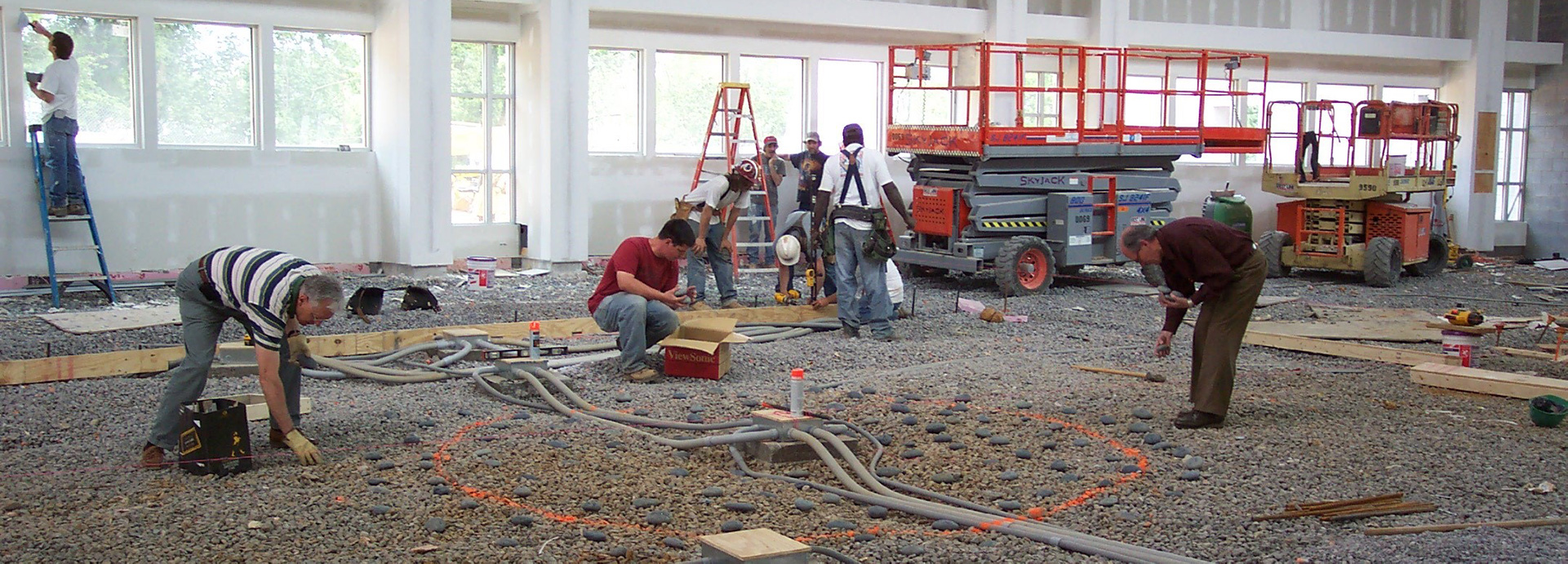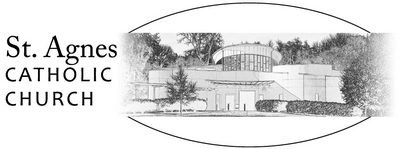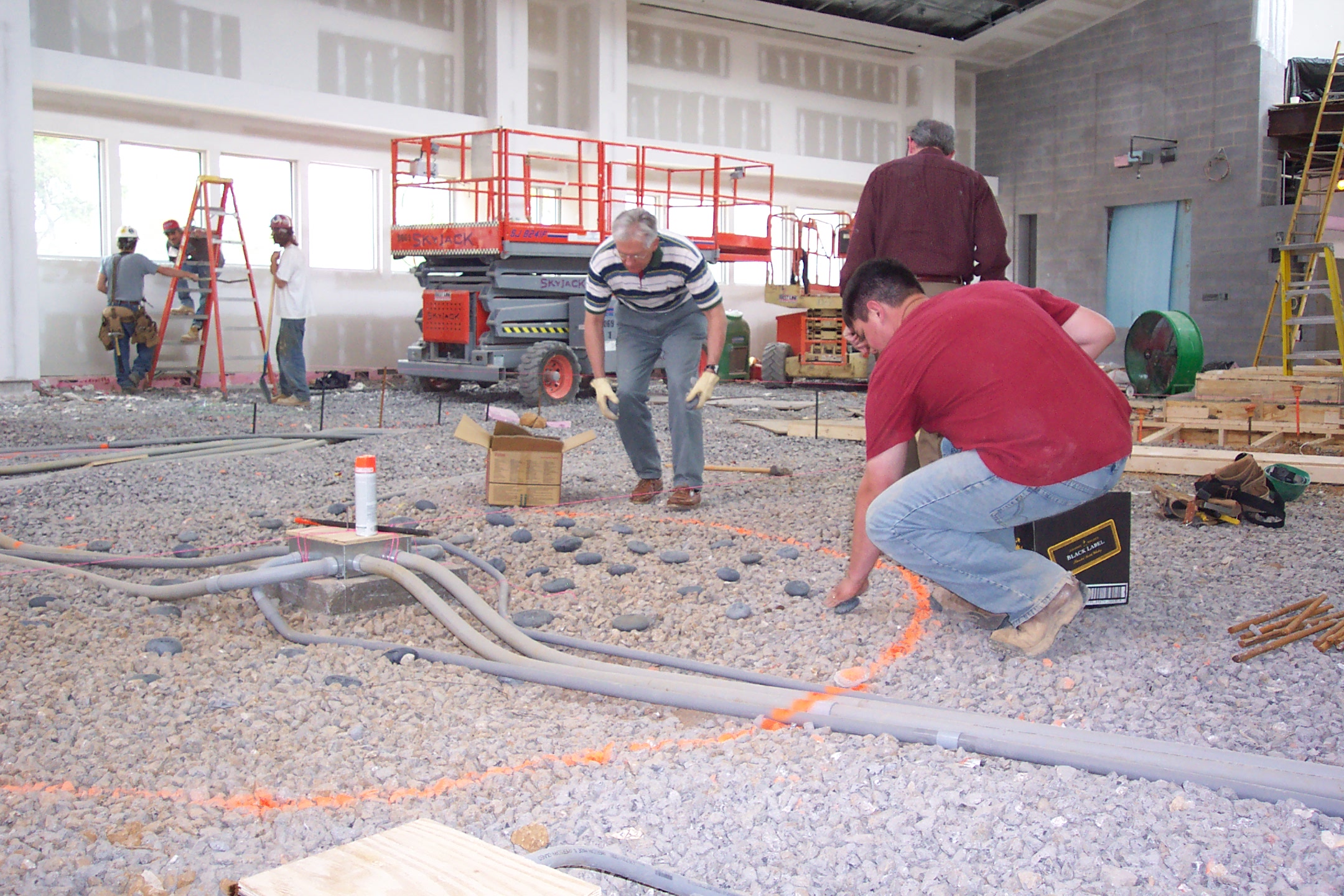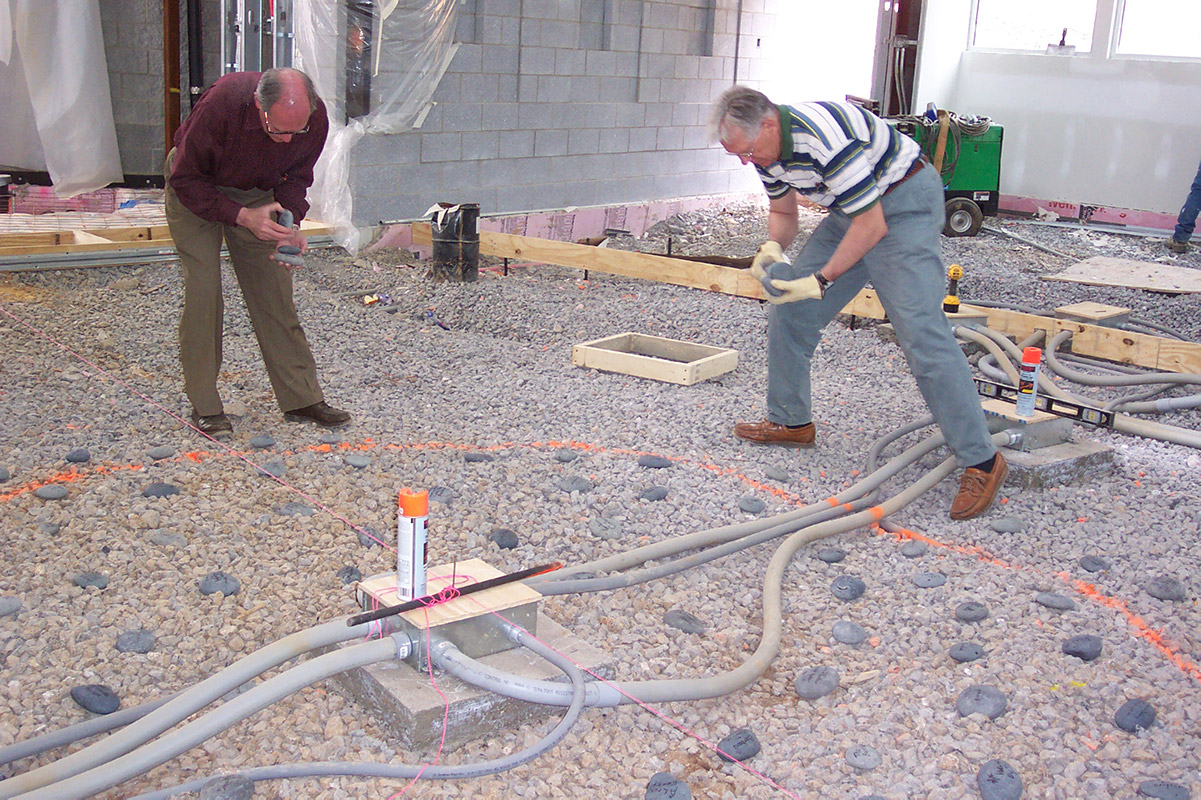
Catholic Corner
July 3, 2021
The font and the altar table anchors the ritual space. As new Christians rise from the waters of baptism, they face the altar table. Both physically and ritually, font leads to table. This link is emphasized through the use of the same green Connemara marble, thus tying the two anchors together by material elements as well.
Let’s talk table! The Altar does indeed look like a table. This is a central design element and one that was carried over from the original St. Agnes Chapel. There the table is a beautiful, hand-made wooden piece designed and constructed by parishioner and West Virginian craftsman Jack Geary. The imagery of a table around which the People of God could gather arises from the scriptural understanding of Jesus’ meal ministry. This reconciling ministry wherein he ate without making distinctions between social class or status, signaled the inbreaking of the reign of God. As well, this meal ministry laid the foundation for the celebration of the Eucharist wherein the resurrected Christ is both host and meal. This table imagery evoked the importance of a hospitable and reconciling community that gathers around the one table of the Lord. With these scriptural elements in mind the table shape was carried over into the new space. The altar table remains a place of gathering for meal and is equally approachable from all four sides. The carving on the marble legs reflects the carving details found in the table in the original Chapel. A final link with the St. Agnes Chapel is made with the mounting of the original altar stone (from 1889) which is mounted on the underside of the mensa (top) of the altar.
One of the guiding documents used in the formation process of the community that eventually led to the building of the space was that of Built of Living Stones. This document, grounded in the vision of Vatican II helped the community understand more clearly and deeply its role as the Living Stones of the Church. Together they built a worship space which makes visible the Church living in a particular place, the dwelling of God among us now reconciled in Christ. As such the building itself becomes “a sign of the pilgrim Church on earth and reflects the Church dwelling in heaven.”(#17) With this image clearly in mind, and having inculcated the image of themselves as the Living Stones of the Church, there are laid beneath the altar of the new worship space river rocks signed by the members of the community and placed there during construction, prior to the floor being poured.
As Built of Living Stones reminds all of us:
56 § At the Eucharist, the liturgical assembly celebrates the ritual sacrificial meal that recalls and makes present Christ’s life, death, and resurrection, proclaiming “the death of the Lord until he comes.” The altar is “the center of thanksgiving that the Eucharist accomplishes” Since the Church teaches that “the altar is Christ,” its composition should reflect the nobility, beauty, strength, and simplicity of the One it represents. In new churches there is to be only one altar so that it “signifies to the assembly of the faithful one Christ and the one Eucharist of the Church.”







